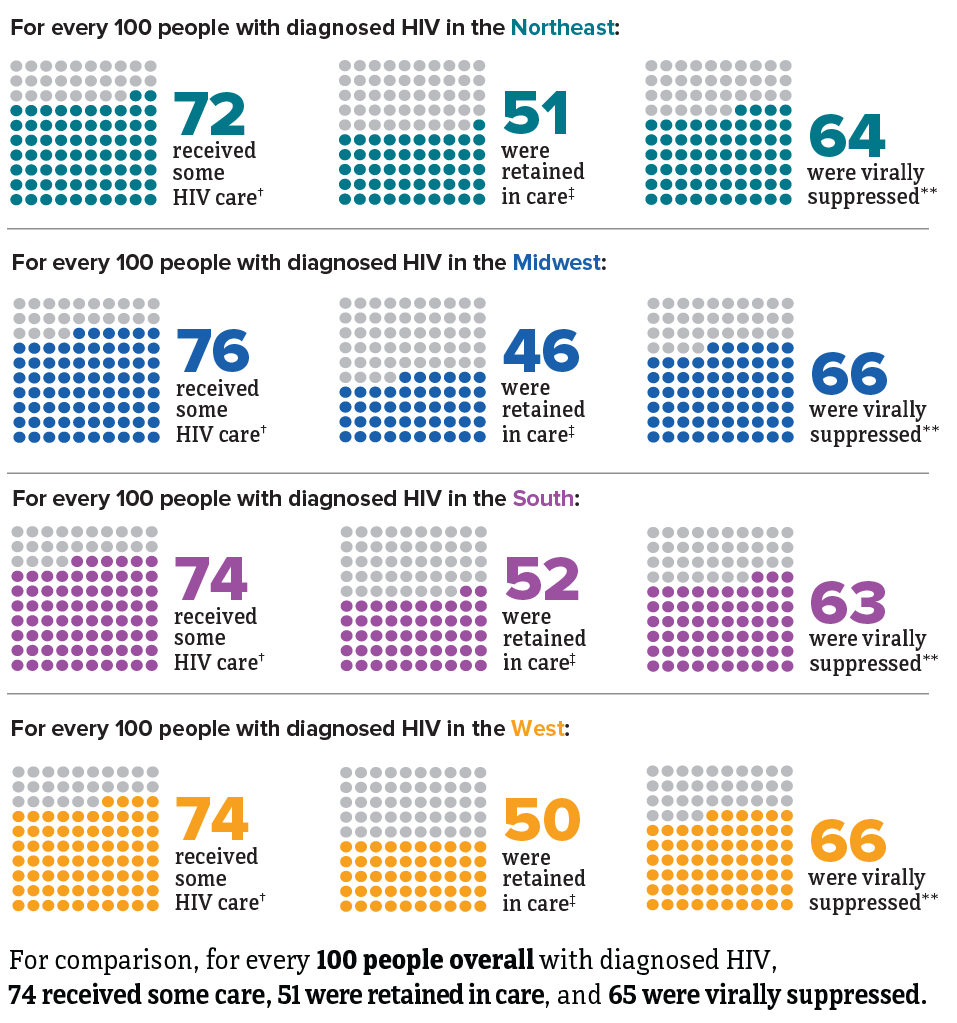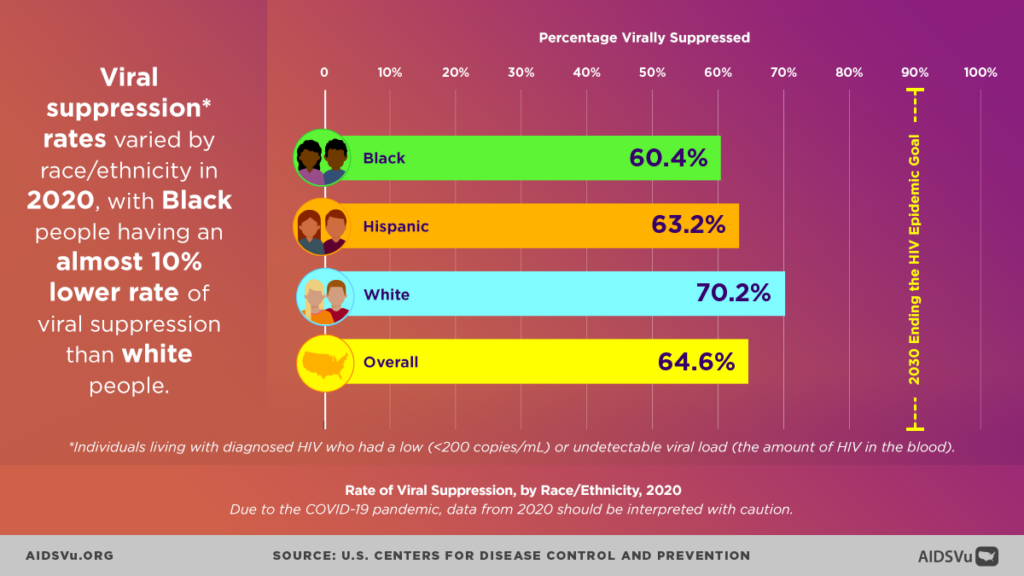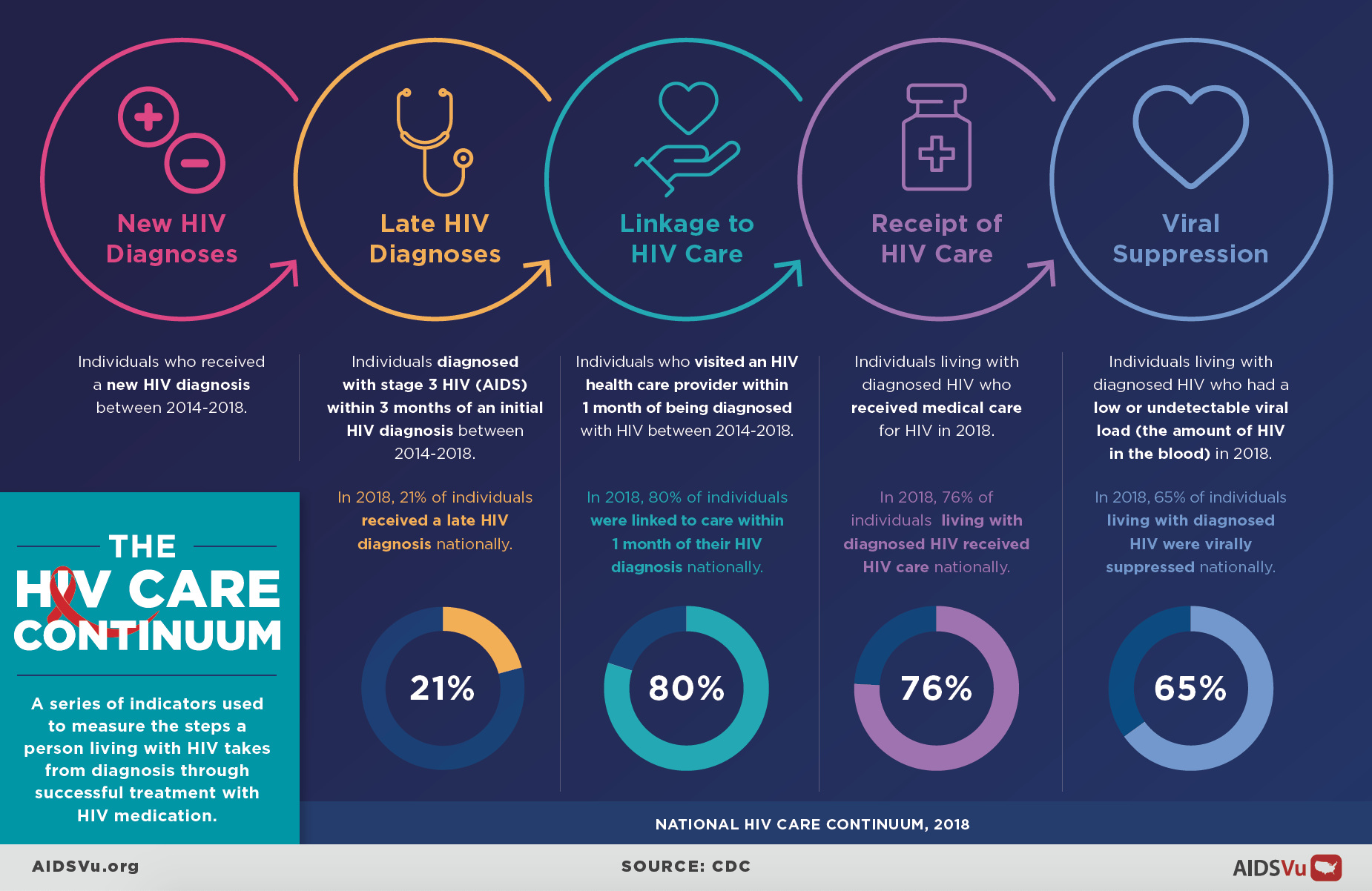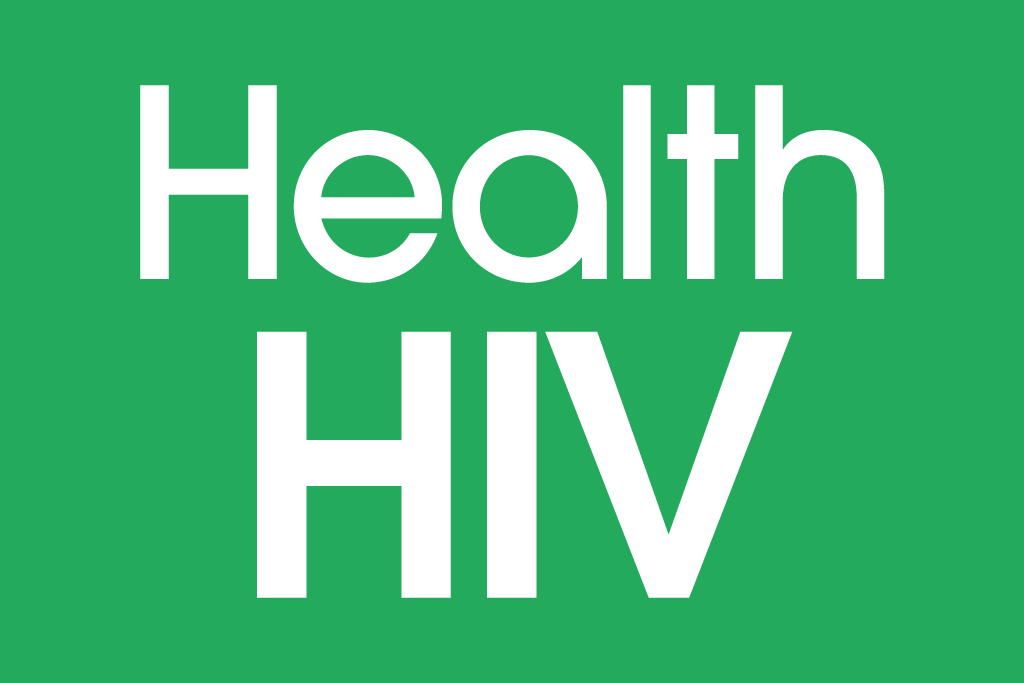Data Visualization and Research
Data Visualizations
Research
The COVID-19 pandemic has created increased need for telehealth appointments. To assess differences in appointment adherence for telehealth compared to in-person HIV medical care visits, this cross-sectional study was conducted of patients receiving HIV care in a safety-net hospital-based outpatient infectious disease clinic in a large urban area.
The aim of this study was to assess the feasibility of a national pre‐exposure prophylaxis (PrEP) programme using smartphone‐compatible data collection.
Consistent with the global trend, youth with HIV (YWH) in Nigeria have high rates of viral nonsuppression. Hence, novel interventions are needed. In a single-arm trial, participants aged 15–24 years received 48 weeks of a combination intervention, comprising daily 2-way text message medication reminders plus peer navigation.
This manuscript documents the development of an innovative individual-level peer navigation intervention “Salud y Orgullo Mexicano” (SOM) designed to increase linkage and retention to HIV care for Mexican men who have sex with men (MSM) in Chicago, Illinois.
Prevention and care service integration, pivotal for the HIV care continuum, depends on relationships among service providers and agencies offering HIV services. To better train and allocate professional development resources for these providers, research is needed to assess the overall differences between provider-type and their demographics, intrapersonal factors, and job characteristics.
The aim of this study was to present statistical methods that maximize the use of existing electronic medical records (EMR) to monitor compliance with evidence-based care guidelines in low and middle-income countries (LMICs).
In the United States, less than half of HIV-positive individuals are retained in care. This machine learning model was developed to identify patients at risk for dropping out of care in an urban HIV care clinic using electronic medical records and geospatial data.
In the San Francisco Bay Area (SFBA), trans women of color are disproportionately affected by HIV and have poor HIV care outcomes. This analysis was to identify associations between intervention exposure and primary HIV care visits, ART prescription, and retention in HIV care.







